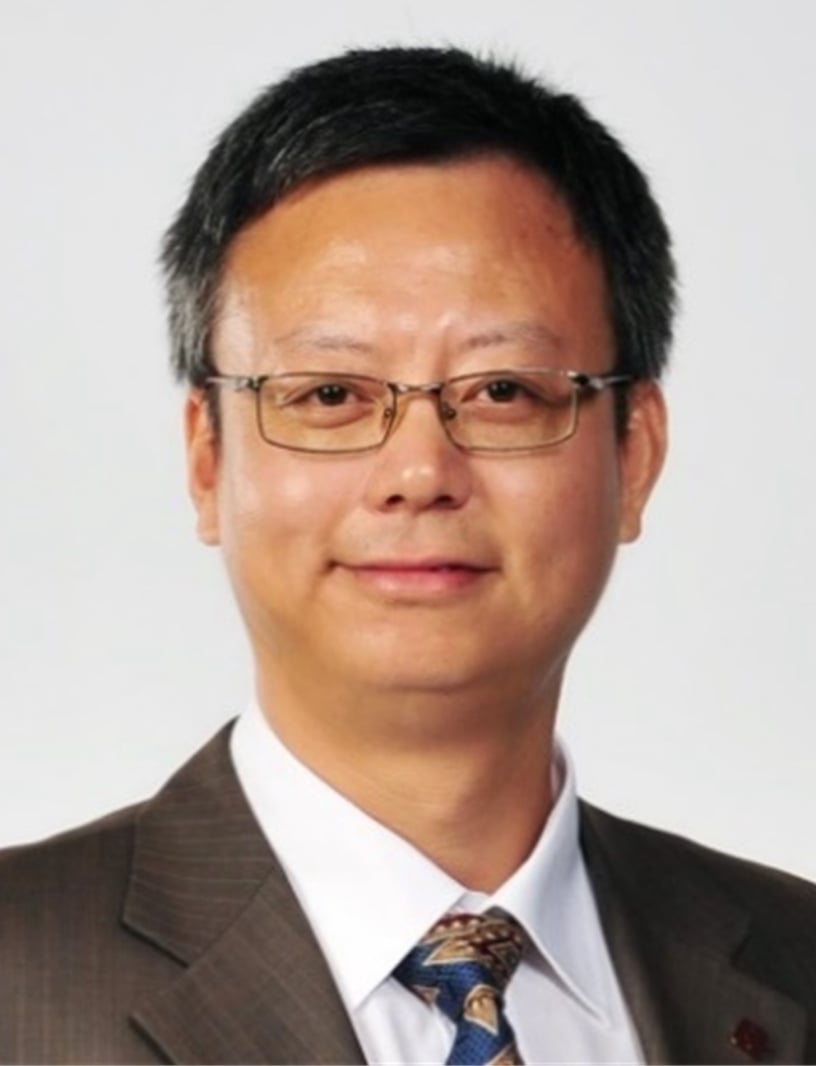Plenary Speaker
Biography
Dr. Hua Zhang obtained his B.S. and M.S. degrees at Nanjing University in China in 1992 and 1995, respectively, and completed his Ph.D. with Prof. Zhongfan Liu at Peking University in China in July 1998. He joined Prof. Frans C. De Schryver’s group at Katholieke Universiteit Leuven (KULeuven) in Belgium as a Research Associate in January 1999. Then he moved to Prof. Chad A. Mirkin’s group at Northwestern University as a Postdoctoral Fellow in July 2001. He started to work at NanoInk Inc. (USA) as a Research Scientist/Chemist in August 2003. After that, he worked as a Senior Research Scientist at Institute of Bioengineering and Nanotechnology in Singapore from November 2005 to July 2006. Then he joined the School of Materials Science and Engineering in Nanyang Technological University (NTU) as an Assistant Professor. He was promoted to a tenured Associate Professor on March 1, 2011, and Full Professor on Sept. 1, 2013. In 2019, he joined the Department of Chemistry in City University of Hong Kong as a Chair Professor, and currently he is the Herman Hu Chair Professor of Nanomaterials.
Dr. Zhang’s research is highly interdisciplinary. His current research interests focus on phase engineering of nanomaterials (PEN) and controlled epitaxial growth of heterostructures, including the synthesis of ultrathin two-dimensional nanomaterials (e.g., metal nanosheets, graphene, metal dichalcogenides, metal-organic frameworks, covalent organic frameworks, etc.), novel metallic and semiconducting nanomaterials, novel amorphous nanomaterials, and their hybrid composites for various applications, such as catalysis, clean energy, (opto-)electronic devices, chemical and biosensors, and water remediation.
Phase Engineering of Nanomaterials (PEN)
Hua ZHANG
Abstract
In this talk, I will summarize the recent research on phase engineering of nanomaterials (PEN) in my group, particularly focusing on the rational design and synthesis of novel nanomaterials with unconventional phases for various promising applications. For example, by using wet-chemical methods, for the first time, we have successfully prepared novel Au nanostructures (e.g., the hexagonal-close packed (hcp) 2H-Au nanosheets, 4H-Au nanoribbons, and crystal-phase heterostructured 4H/fcc and fcc/2H/fcc heterophase Au nanorods), epitaxially grown metal nanostructures on the aforementioned unconventional Au nanostructures and 2H-Pd nanoparticles, and amorphous/crystalline heterophase Pd, PdCu, Rh and Rh alloy nanosheets. By using gas-solid reactions, metastable 1T'-phase group VI transition metal dichalcogenides (TMDs), e.g., WS2, WSe2, MoS2, MoSe2, WS2xSe2(1-x) and MoS2xSe2(1-x), have been prepared. Impressively, the 1T'-MoS2-supported single-atomically dispersed Pt (s-Pt) atoms with Pt loading up to 10 wt% exhibit superior performance in hydrogen evolution reaction. Importantly, 1T'-TMD monolayers can be stabilized on 4H-Au nanowires, which can be used for ultrasensitive SERS detection Moreover, the salt-assisted 2H-to-1T' phase transformation of TMDs have been achieved, and the phase transformation of TMDs during our developed electrochemical Li-intercalation process has been observed. Impressively, the lithiation-induced amorphization of Pd3P2S8 has been achieved. Currently, my group focuses on the investigation of phase-dependent physicochemical properties and applications in catalysis, (opto-)electronic devices, clean energy, chemical and biosensors, surface enhanced Raman scattering, photothermal therapy, etc., which we believe is quite unique and very important not only in fundamental studies, but also in future practical applications. Importantly, the concepts of phase engineering of nanomaterials (PEN), crystal-phase heterostructures, and heterophase nanomaterials are proposed.
References
(1) Nature, 2023, 621, 300.
(2) Nat. Mater., 2024, 23, in press.
(3) Nat. Mater., 2021, 20, 1113.
(4) Nat. Rev. Chem., 2020, 4, 243.
(5) J. Am. Chem. Soc., 2020, 142, 18971.
(6) Nat. Chem., 2018, 10, 638.
(7) Nat. Chem., 2018, 10, 456.
(8) Nat. Catal., 2018, 1, 460.
(9) Adv. Mater., 2018, 30, 1803234.
(10) Chem. Sci., 2017, 8, 795.
(11) ACS Nano, 2015, 9, 9451.
(12) Nat. Commun., 2015, 6, 7684.
(13) Nat. Commun., 2013, 4, 1444.
(14) ACS Nano, 2012, 6, 74.
(15) Nat. Commun., 2011, 2, 292.
(16) Angew. Chem. Int. Ed., 2011, 50, 11093.

